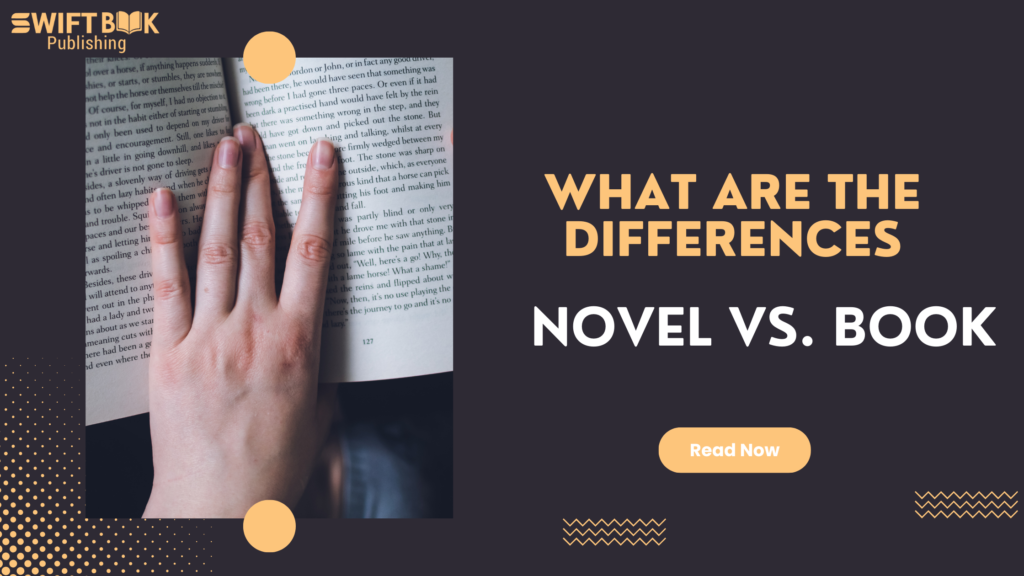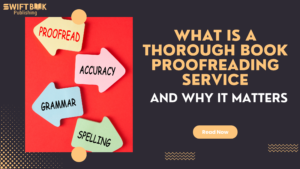Just when you think you know the difference between a novel vs book, you might find there’s more to it. Understanding these distinctions is crucial, especially if you’re an avid reader or aspiring writer. A novel is a specific type of book, while the term book encompasses a broader range of literary forms. To help you grasp this important concept, here are some key points to consider:
Content: Novels tell fictional stories, while books can be non-fiction, poetry, or reference materials.
Length: Novels are typically longer, often exceeding 40,000 words.
Structure: Novels usually have complex plots and character development, whereas books may not follow the same narrative structure. By familiarizing yourself with these nuances, you’ll enhance your understanding of what makes a book a novel and the fascinating landscape of literature.
Understanding the Terms
The distinction between a novel and a book can clarify your reading preferences and deepen your appreciation of literature. Understanding the definitions and categories can significantly enhance your experience as a reader.
What is a Novel?
For a piece of writing to be categorized as a novel, it must be a fictional narrative that typically explores character development and complex themes over an extended length, usually exceeding 40,000 words.
Definition of a Book
The term book is more encompassing and refers to any written work that is bound and published. This can include novels, non-fiction works, textbooks, reference materials, and many other formats.
A book can vary significantly in length, format, and genre. It may consist of chapters detailing educational topics, storytelling elements, or even collections of essays or stories, catering to diverse interests among readers.
Common Genres of Novels
Books in the novel category often fall into specific genres such as mystery, romance, science fiction, fantasy, and historical fiction.
This categorization helps you find what resonates with your reading preferences. Each genre offers its distinct elements and themes that attract different audiences, enhancing your reading journey.
Types of Books beyond Novels
- Non-Fiction: Works based on facts and real events.
- Textbooks: Educational materials focused on academic subjects.
- Biographies: Life stories of individuals.
- Graphic Novels: Narratives presented in comic book format.
- Children’s Books: Tailored for young audiences with engaging illustrations.
The exploration of different types of books expands your understanding of literature beyond the traditional novel.
Books can play various roles in your life: education, inspiration, or entertainment. Types of books might include:
| Type | Characteristics |
| Non-Fiction | Factual information on various topics |
| Textbooks | Structurally designed for educational purposes |
| Biographies | Life stories of notable people |
| Graphic Novels | Visual storytelling combined with narrative |
| Children’s Books | Age-appropriate stories and illustrations |
It’s clear that understanding the distinction between a novel and a book can help you navigate the literary world more effectively. By knowing the types available, you create opportunities for exploration in novel vs book.
Structural Differences
Some of the most prominent distinctions between a novel and a book lie in their structure. Understanding these structural differences will help you appreciate the nuances of novel vs book discussions.
Length and Word Count
One of the primary differences is in length and word count. Novels typically range from 50,000 to over 100,000 words, offering a more detailed narrative compared to shorter books, which can be as brief as a few thousand words. Your reading experience may significantly vary based on which format you choose.
Chapters and Sections
For many readers, the layout of chapters and sections distinguishes a novel from a standard book. While novels often contain multiple chapters that guide the flow of the story, books may not be as segmented. This structure impacts how you engage with the content.
To enhance your experience in reading, novels frequently employ chapters to segment the story, allowing for increased tension and pacing control. Each chapter serves a purpose, building on previous events and organizing your journey through the narrative. In contrast, other types of books might present information in a continuous flow, resulting in a different reading pace.
Narrative Style and Perspective
For narrative style and perspective, novels usually adopt a more immersive narrative approach. They may explore a character’s inner thoughts and feelings, allowing you to see the world through their eyes. This is less common in traditional books, which often focus on delivering facts or straightforward storytelling.
Count on novels to incorporate various narrative techniques, such as first-person or third-person points of view, enriching your experience. This depth of perspective engages your emotions and fosters a connection with characters, making the reading journey more captivating compared to conventional books.
Use of Dialogue
An important structural element in novels is the use of dialogue. Novels embellish their narratives with rich dialogues, bringing characters to life. In contrast, many books may relay information primarily through expository text, limiting character interaction.
Understanding the significance of dialogue can enhance your reading comprehension. In novels, dialogue shapes personalities, drives the plot and emphasizes key moments. This technique allows you to feel the characters’ emotions and motivations, adding layers to the storytelling that may be lacking in other types of books.
When all is said and done, recognizing these structural differences in the context of novel vs book will enhance your understanding of what makes a book a novel and help you appreciate the various forms literature can take.
Thematic Nature
For anyone exploring the novel vs book distinction, understanding thematic nature is crucial. Novels are often rich in themes and differen tones that explore deep into the human experience, while other books can vary significantly in their thematic depth.
Themes Commonly Explored in Novels
An examination of novels reveals a multitude of themes, including love, loss, identity, and morality. These complex themes allow you to connect with the characters on a deeper level, prompting reflection on your own life.
Themes Commonly Found in Other Books
With other types of books, themes can be more straightforward or limited in scope. Often, they focus on practical topics or narratives that do not demand extensive engagement.
Another important aspect of this discussion is that while themes in novels are often layered, conveying multiple messages, other books might concentrate on a singular topic, such as self-help strategies or historical facts. This distinction can influence how you engage and reflect on the material.
Character Development in Novels vs. Other Books
To truly appreciate the novel vs book differences, consider character development. Novels excel in crafting intricate character arcs, allowing you to experience transformation alongside the characters.
Commonly, novels provide a much deeper exploration of character motivations and complexities compared to other books. This allows you to form emotional bonds with the characters, enhancing your overall reading experience. In contrast, other books might only scratch the surface, offering character insights that serve the narrative rather than enrich it.
Emotional Engagement: Novels vs. Other Forms
Found within novels is a profound emotional engagement that pulls you into the story. The combination of intricate themes and character development fosters connections that often surpass those found in other forms of writing.
It’s important to recognize that novels aim to evoke deep emotions, drawing you into a narrative that feels personal. Other forms, like textbooks or manuals, while informative, often lack this emotional depth, providing a stark contrast to the immersive experience of reading a well-crafted novel.
Purpose and Reader Engagement
After exploring the various definitions of a novel vs book, it’s crucial to understand their distinct purposes and how they engage readers. Each format serves a unique function, catering to different needs, interests, and modes of engagement.
Intended Audience for Novels
Novels mainly target readers who seek entertainment and emotional connections. You can expect to find a diverse range of genres, from romance to science fiction, making it easier for you to find something that resonates with your interests.
Intended Audience for Non-Narrative Books
Any non-narrative book generally aims at readers looking for knowledge or practical advice, such as self-help guides, manuals, and textbooks. These books often appeal to professionals, students, or anyone seeking improvement in a specific area.
This focus means your experience with non-narrative books is typically more straightforward, where you read for clarity and understanding rather than emotional engagement. Unlike novels that aim to immerse you in a story, non-narrative books prioritize factual information and direct applicability.
Reader Immersion in Novels
Reader immersion is a crucial aspect of novels, as they engage you emotionally and mentally, pulling you into their fictional worlds. With complex characters and intricate plots, novels foster a deeper connection between you and the story.
For instance, particularly captivating novels can lead you to forget your surroundings entirely, making you feel as though you are part of the narrative. Suspense, character development, and engaging settings all contribute to this immersive experience, making novels a powerful medium for storytelling.
Informative vs. Fictional Approaches
Audience perception of informative versus fictional approaches affects how you engage with each format. In novels, you expect compelling storylines and character interactions, while non-narrative formats deliver factual or instructional content.
Intended outcomes for your reading experience differ significantly. While novels aim to entertain and provoke thought, non-narrative books serve more as resources for learning or self-improvement. Understanding these differences enhances your appreciation of both formats in the ongoing debate of novel vs book.
Publishing Trends for Novels vs Books
Despite the similarities, the publishing landscape for novels vs books showcases distinct trends that are worth noting.
Market Trends for Novels
The market for novels is increasingly emphasizing unique storytelling, with readers seeking innovative plots and diverse voices. The rise of themes like mental health and social issues has further captivated audiences, leading to more profound literary discussions.
- Innovative storytelling
- Diverse voices
- Mental health themes
- Social issues
- Literary discussions
| Trend | Description |
|---|---|
| Increasing popularity of genre fiction | Readers gravitate towards specific genres such as fantasy and romance. |
| Rise of debut authors | New authors are gaining traction through both traditional and self-publishing. |
| Greater focus on online platforms | Social media and book blogs are increasingly shaping reading trends. |
| Emphasis on short series | Many readers prefer shorter, engaging series over lengthy novels. |
| Sustainability in publishing | Books are increasingly produced with eco-friendly methods. |
With the novel market evolving, you can witness a shift towards more experimental formats, captivating narratives, and a blend of traditional genres. Many readers expect fresh perspectives and relatable characters that resonate with societal themes, injecting new energy into their reading experiences.
- Experimental formats
- Relatable characters
- Fresh perspectives
- Societal themes
- New energy
| Trend | Description |
|---|---|
| Integration of multimedia elements | Novels incorporating AR and VR are gaining popularity. |
| Expanded digital releases | Novels have more direct access to global readers digitally. |
| Fan-driven publishing | Reader communities increasingly influence the publishing process. |
| Pop culture integration | Collaborations with movies and games are promoting novels. |
| New subgenres emerging | Hybrid genres are increasing, appealing to niche markets. |
Self-Publishing vs. Traditional Publishing
Trends are tilting the balance toward self-publishing, as authors seek more control over their work. Traditional publishing remains an option but often comes with more constraints.
Trends indicate a rising inclination towards self-publishing due to its flexibility and potential for higher royalties. Authors like you appreciate the quick turnaround and opportunities for reader engagement that self-publishing offers. Conversely, traditional publishing provides established marketing channels and editorial support, maintaining its appeal in a competitive landscape.
Impact of Digital Media on Novels and Books
Types of digital media, from eBooks to audiobooks, have profoundly impacted how you consume literature today. The accessibility of various formats caters to different reader preferences.
Digital platforms not only enhance your reading experience but also introduce potential risks, such as information overload and piracy. On a positive note, these platforms provide a global reach, allowing authors to connect with diverse audiences. It’s imperative to stay aware of both the advantages and challenges that accompany digital media’s rise in the novel vs book debate.
Digital media has transformed the publishing world, introducing new distribution channels and facilitating instant access to a plethora of titles. The ease of self-publishing books has democratized the industry, making it possible for aspiring writers to share their voices. However, with so many titles available, you may encounter the challenge of content saturation, leading to a struggle for visibility among authors.
Cultural Impact
Many readers underestimate the significant cultural influence that novels and books have on society. Understanding this cultural impact can lead to a greater appreciation of literature and its role in shaping human experiences.
Influence of Novels in Society
With their captivating narratives, novels often hold a mirror to society, reflecting its aspirations, struggles, and realities. They inspire movements, spark debates, and encourage empathy, ultimately shaping your understanding of diverse perspectives.
Role of Non-Fiction Books
NonFiction books play an equally critical role in informing readers about factual events, theories, and experiences. They pave the way for personal growth by offering insights into history, science, and culture, allowing you to gain knowledge that can influence your worldview.
To understand the integral role of non-fiction, consider the profound impact of biographies, self-help, and historical accounts. Each genre equips you with practical wisdom and knowledge that aids in decision-making and enhances your critical thinking skills. They serve as necessary resources, providing you with answers to pressing questions and opportunities for personal development.
The Lasting Legacy of Iconic Novels
Role models of literature, iconic novels leave a profound, lasting legacy that extends beyond their pages. These works often become cultural touchstones you reference in discussions and various forms of media.
Understanding the legacy of such novels, like “Pride and Prejudice” or “1984,” reveals how they continue to influence contemporary thought and philosophy. Their themes of love, rebellion, and societal critique resonate across generations, underscoring the importance of understanding the novel vs book distinction.
How Cultures Shape Literary Forms
Legacy plays a vital role in shaping how different cultures approach literary forms. Each culture brings its own context, issues, and aesthetics to the storytelling process, affecting how you perceive and engage with literature.
This cultural interplay informs trends in genres, themes, and narratives. For instance, the rise of graphic novels in specific cultures reflects your need for visual storytelling, while traditional forms like epic poetry or prose serve as a foundation for understanding universal human experiences. Engaging with various literary forms deepens your appreciation of the complex dynamics between novel vs book.
Conclusion
Drawing together the distinctions between novel vs book, you can better appreciate their unique characteristics. Note, a novel is a fictional narrative typically longer and more complex, while a book encompasses a broader category, including non-fiction and various formats.
Here are key points to consider:
– Novels tell intricate stories with developed characters.
– Books can vary widely in genre, purpose, and structure.
– Understanding what makes a book a novel highlights the importance of narrative depth.
Recognizing these differences not only enriches your reading experience but also deepens your appreciation for literature as a whole.







